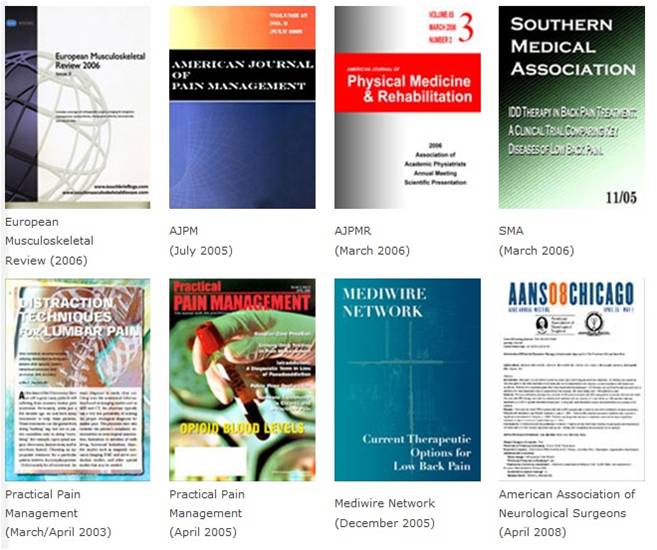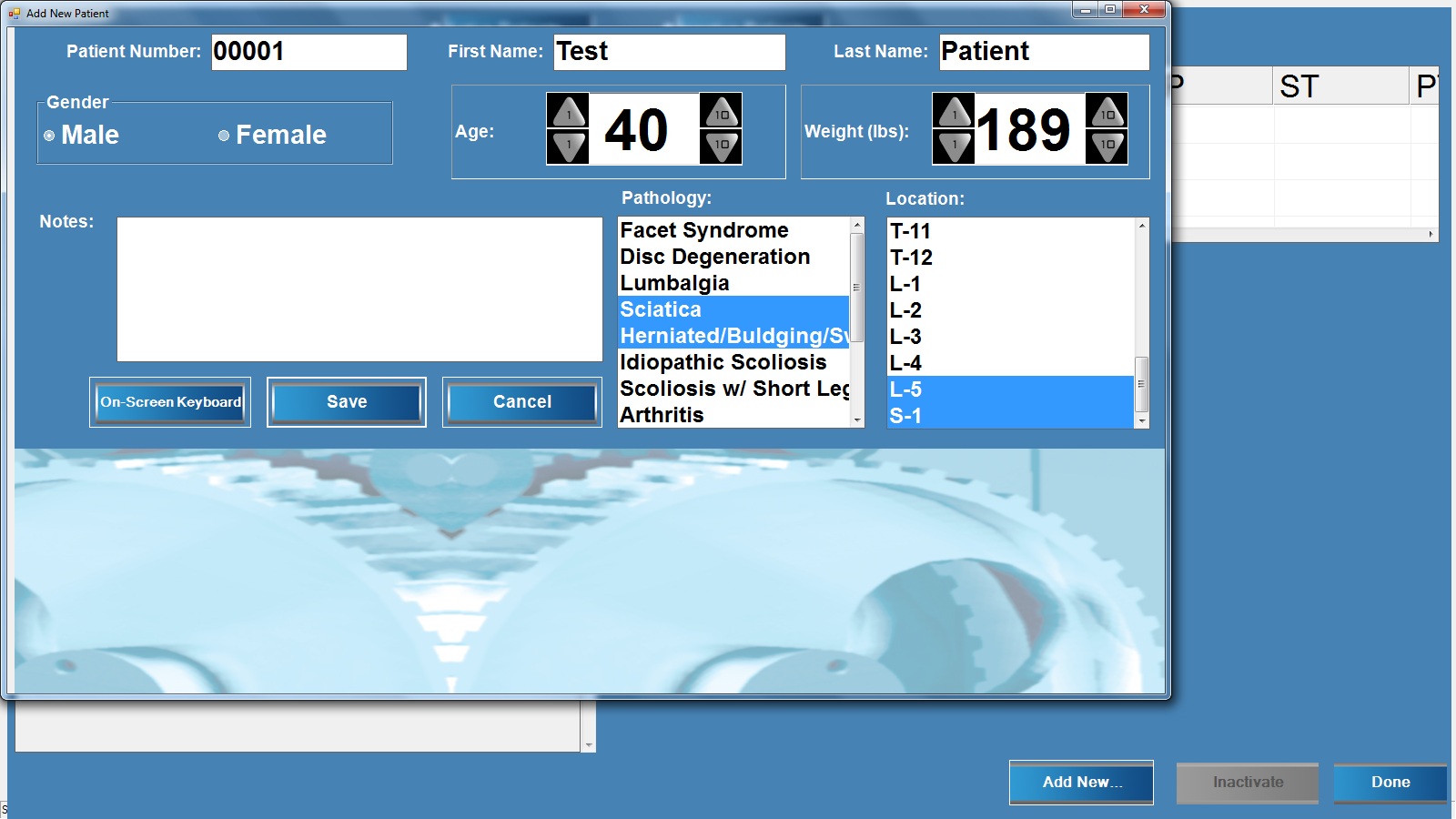Evidence & Articles Since its development in the late 1990s and early 2000s, IDD Therapy treatment has had a commitment to evidence-based medicine.  Overall, the evidence shows that IDD Therapy to be as effective or more effective than manual therapy and exercise and more effective than traditional traction.
McClure et al show that 92% of 129 patients considered surgical candidates had a greater than 50% reduction in pain with IDD Therapy, Schimmel et al show IDD Therapy to be no different from sham treatment whilst Shealy et al show pain relief at the end of treatment and continuous pain reduction one year after completion of treatment. Please see below references and for copies of any of the studies, please contact Steadfast. Commitment to Evidence-based medicine As well as a growing number of published studies, the manufacturers of IDD Therapy and SPINA technology have built into the software internationally recognised research tools to assist in the development and refinement of the treatment programmes. These include the Visual Analogue Scale and Oswestry Disability Index. In addition, the software allows for multi-variable data recording by pathology, gender age etc and includes active tracking of treatment.  
The addition of such software capability underlines the commitment of the manufacturer to demonstrate the efficacy of the treatment. It also acknowledges that not all patients will respond, but by allowing multi-variable data analysis, this enables clinicians to identify the parameters which drive success and also understand where and when alternative treatments may be more appropriate. It would be easy for the manufacturers not to include such a capability. Being able to record, measure and demonstrate treatment outcomes with your own software would be like building a set of gallows on which to hang oneself were the treatment of limited effectiveness. However with over 1,000 IDD Therapy providers internationally the manufacturers have a desire to ensure that clinicians are as best-equipped as possible to squeeze every ounce of effectiveness out of the treatment in the best interest of patients.  Case studies Case studiesAll IDD Therapy providers are encouraged to produce case studies to support the evidence of treatment. A standard case study template is available for all IDD Therapy providers, with the goal of enabling a degree of homogeneity in the manner in which clinical data is recorded. For more details of case studies or to request copies of any of the articles, please contact Steadfast Clinics Ltd. References The manufacturers of SPINA machines and IDD Therapy put forward the treatment for independent testing and are transparent in the presentation and publication of data. Shealy CN and Borgmeyer V. Decompression, Reduction and Stabilization of the Lumbar Spine: A Cost- Effective Treatment for Lumbosacral Pain. American Journal of Pain Management 1997. 7:63-65 Eyerman EL. Simple Pelvic Traction Gives Inconsistent Relief to Herniated Lumbar Disc Sufferers. Presented to the American Society of Neuorimaging and printed in the Journal of Neuroimaging Vol. 8 No. 2 1998. C. Norman Shealy, MD, PhD, Nirman Koladia, MD, and Merrill M. Wesemann, LONG-TERM EFFECT ANALYSIS OF IDD THERAPY IN LOW BACK PAIN: A RETROSPECTIVE CLINICAL PILOT STUDY. American Journal of Pain Management Vol. 15 No. 3 July 2005 Schimmel JJ, de Kleuver M, Horsting PP, Spruit M, Jacobs WC, van Limbeek J. No effect of traction in patients with low back pain: a single centre, single blind, randomized controlled trial of Intervertebral Differential Dynamics Therapy. Eurospine Journal 2009 Dec 18 (12): 1843-1850 McClure D and Farris B, Intervertebral Differential Dynamics Therapy – A New Direction for the Initial Treatment of Low Back Pain. European Musculoskeletal Review 2006. 45-48 Cholewicki J et al., Trunk muscle response to various protocols of lumbar traction, Manual Therapy (2008) doi:10.1016/j.math.2008.08.005 Schaufele MK, Newsome M. Intervertebral Differential Dynamics (IDD) Phys Med Rehab Kuror 2011; 21: 34 – 40 |
